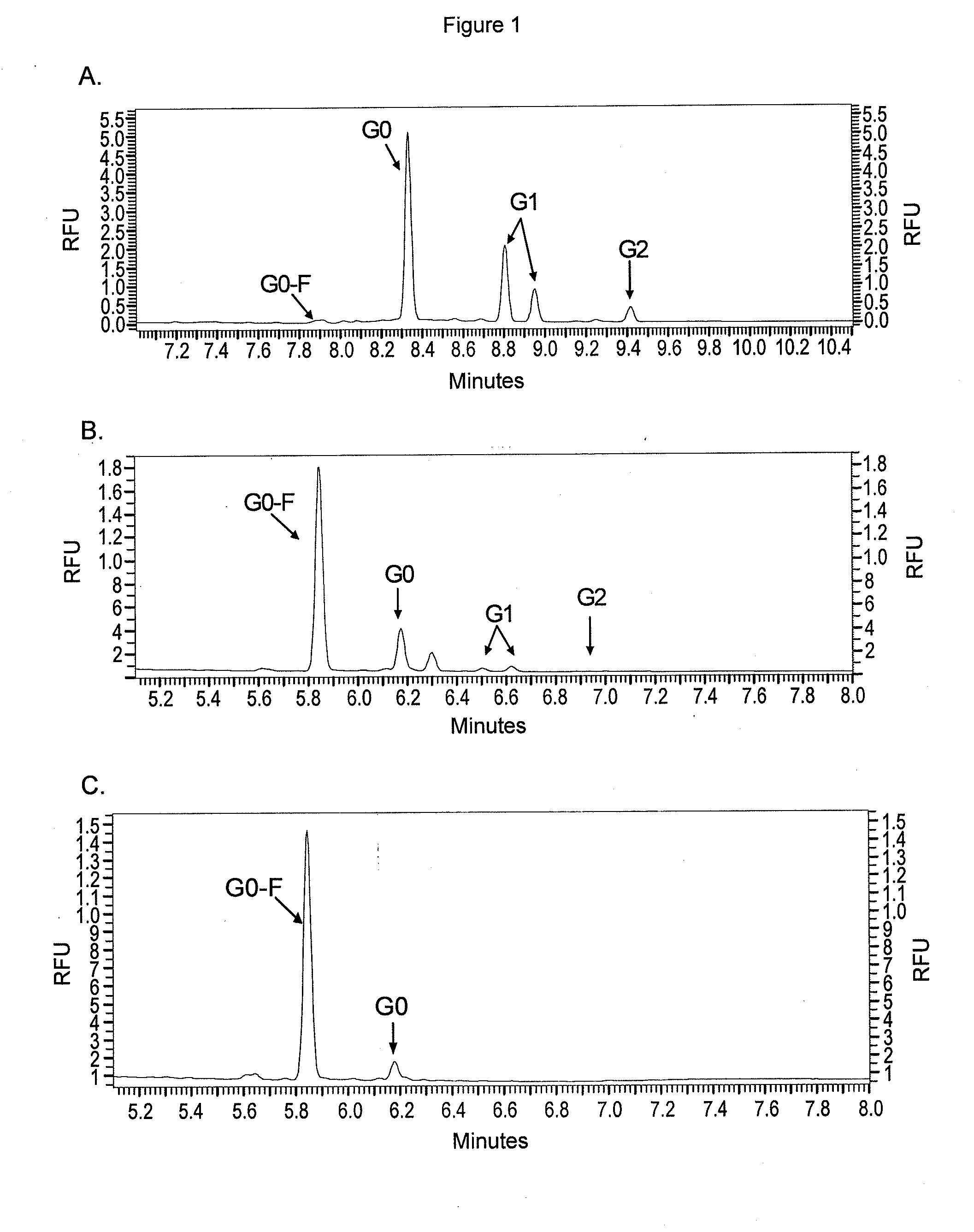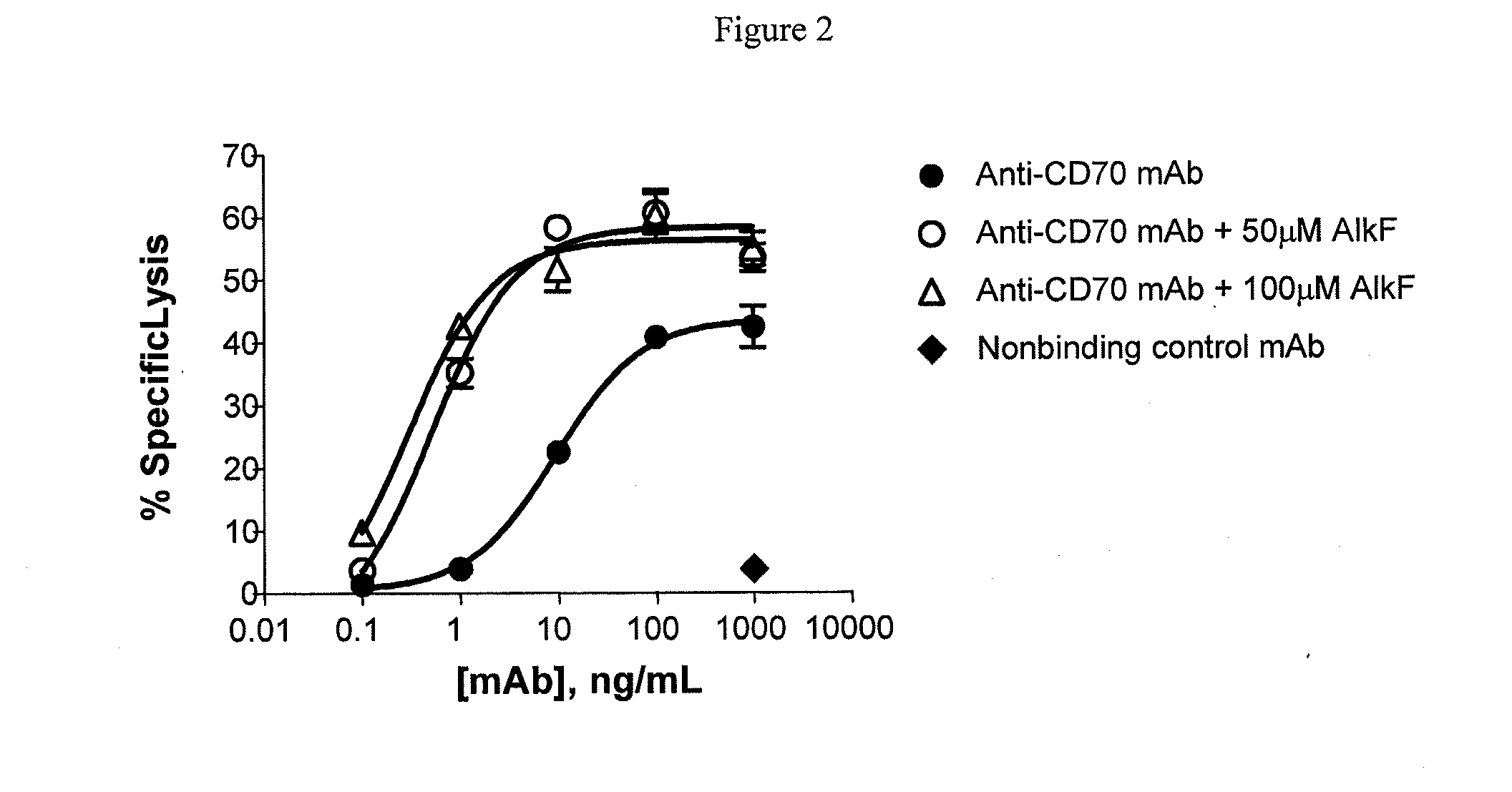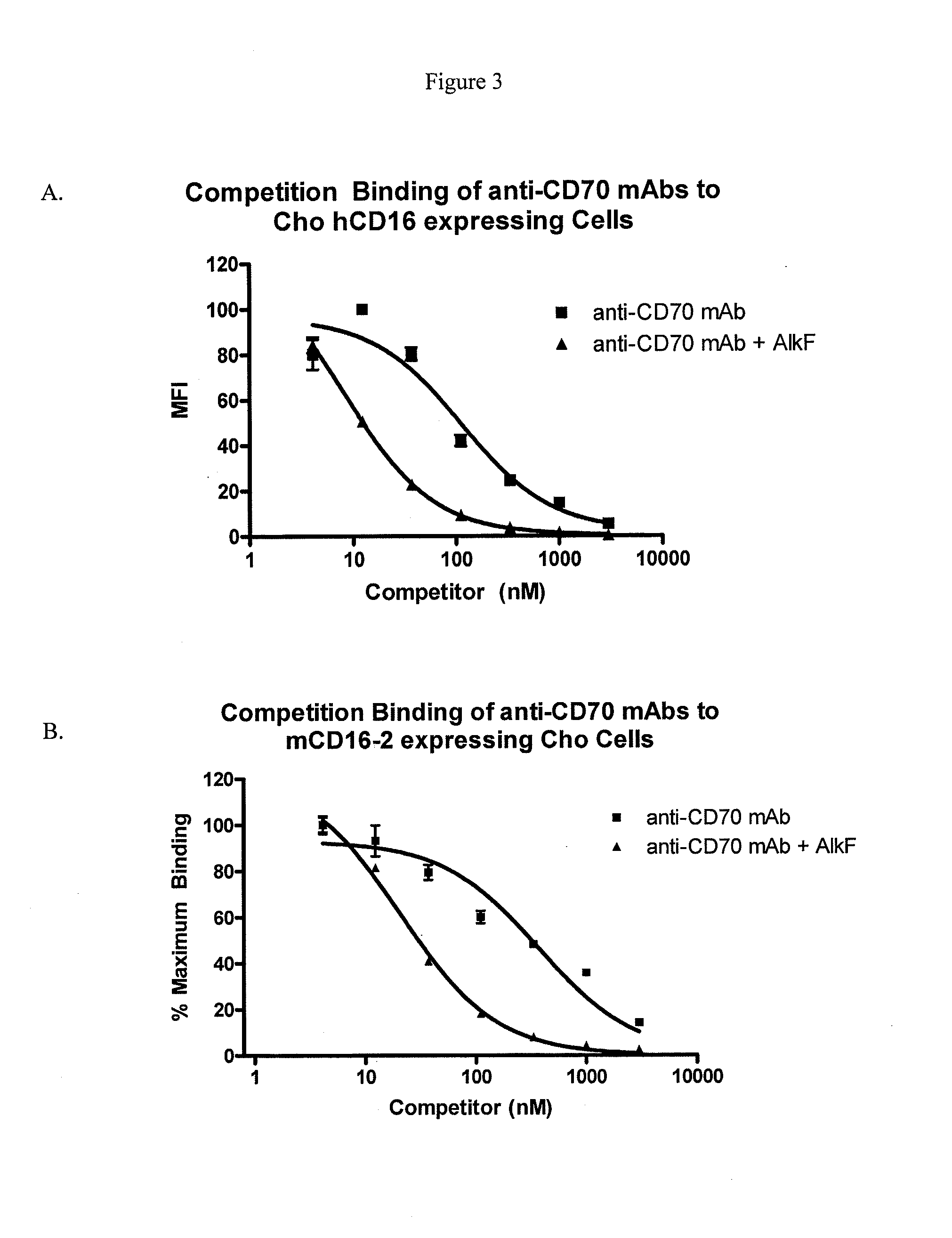Methods and compositions for making antibodies and antibody derivatives with reduced core fucosylation
a technology of reducing core fucosylation and composition, which is applied in the direction of immunoglobulins, peptides, esterified saccharide compounds, etc., can solve the problems that the antibodies produced by such methods lack the complex n-linked glycan structure associated with mature antibodies, and achieve the effect of inhibiting or reducing core fucosylation
- Summary
- Abstract
- Description
- Claims
- Application Information
AI Technical Summary
Benefits of technology
Problems solved by technology
Method used
Image
Examples
example 1
Synthesis of Alkynyl Fucose Peracetate and General Procedure for Synthesis of Fucose Analogs
[0143]The preparation of alkynyl fucose peracetate (also referred to as peracetyl alkynyl fucose and alkynyl peracetyl fucose) (Compound 7) was described by Sawa et al., 2006, Proc. Natl. Acad. Sci. USA 103:12371-12376 and Hsu et al., 2007, Proc. Natl. Acad. Sci. USA 104:2614-2619, with the following modification. A Corey-Fuchs homologation sequence was employed to install the alkynyl group, as described by Pelphrey et al., 2007, J. Med. Chem. 50:940-950.
[0144]General methods for other fucose analogs: Common reagents and solvents were purchased from either Fisher or Sigma-Aldrich except as follows: L-galactono-1,4-lactone was purchased from Carbosynth Limited. 1H-NMR spectra were recorded on a Varian Mercury spectrometer at 400 MHz. LC / MS data were obtained on a Waters Micromass instrument using an HP 1100 HPLC with a PDA detector. The column used was a Phenomenex SynergiMax RP-C12 column (2 ...
example 2
Antibody Expression in the Presence of Alkynyl Fucose Peracetate
[0145]To determine the effect of alkynyl fucose peracetate on glycosylation of antibodies, a CHO DG44 cell line expressing a humanized IgG1 anti-CD70 monoclonal antibody, h1F6 (see International Patent Publication WO 06 / 113909) was cultured at 3.0×105 cells per mL in 30 mLs of CHO culture media at 37°, 5% CO2, by shaking at 100 RPM in 125 mL shake flasks. The CHO culture media was supplemented with insulin like growth factor (IGF), penicillin, streptomycin and either 50 or 100 μM alkynyl fucose peracetate (prepared as described in Example 1). Cultures were fed on day 3 with 2% volume of feed media containing 2.5 or 5 mM alkynyl fucose peracetate for the 50 and 100 μM alkynyl fucose peracetate cultures, respectively. On day four, each culture was split 1:4 into fresh culture media. Cultures were fed with a 6% volume of feed media containing 833 μM or 1.66 mM alkynyl fucose peracetate on days 5, 7, 9 and 10. Conditioned m...
example 3
LC-MS (Q-T of) Analysis of Antibodies Produced by Expression in the Presence of Alkynyl Fucose Peracetate
[0147]To identify the glycosylation pattern present on purified h1F6 antibodies from Example 2, antibody interchain disulfide bonds were reduced by adding 10 μL of 100 mM DTT to 90 μL of 1 mg / mL antibody in PBS and incubation at 37° C. for 15 min. This solution (20 μL) was injected onto a PLRP-S HPLC column (Polymer Laboratories; Amherst, Mass.) running the following gradient: solvent A, 0.05% TFA in water; solvent B, 0.035% TFA in acetonitrile; a linear gradient of 70 to 50% A from 0 to 12.5 min. The HPLC effluent was analyzed with an electrospray ionization Q-T of mass spectrometer (Waters, Milford, Mass.) with a cone voltage of 35 V collecting from m / z 500 to 4000. Data for the heavy chain were deconvoluted using the MaxEnt1 function in MassLynx 4.0.
[0148]Surprisingly, the heavy chains of antibodies from cells grown in the presence of alkynyl fucose peracetate showed a decreas...
PUM
| Property | Measurement | Unit |
|---|---|---|
| Fraction | aaaaa | aaaaa |
| Fraction | aaaaa | aaaaa |
| Volume | aaaaa | aaaaa |
Abstract
Description
Claims
Application Information
 Login to View More
Login to View More - R&D
- Intellectual Property
- Life Sciences
- Materials
- Tech Scout
- Unparalleled Data Quality
- Higher Quality Content
- 60% Fewer Hallucinations
Browse by: Latest US Patents, China's latest patents, Technical Efficacy Thesaurus, Application Domain, Technology Topic, Popular Technical Reports.
© 2025 PatSnap. All rights reserved.Legal|Privacy policy|Modern Slavery Act Transparency Statement|Sitemap|About US| Contact US: help@patsnap.com



